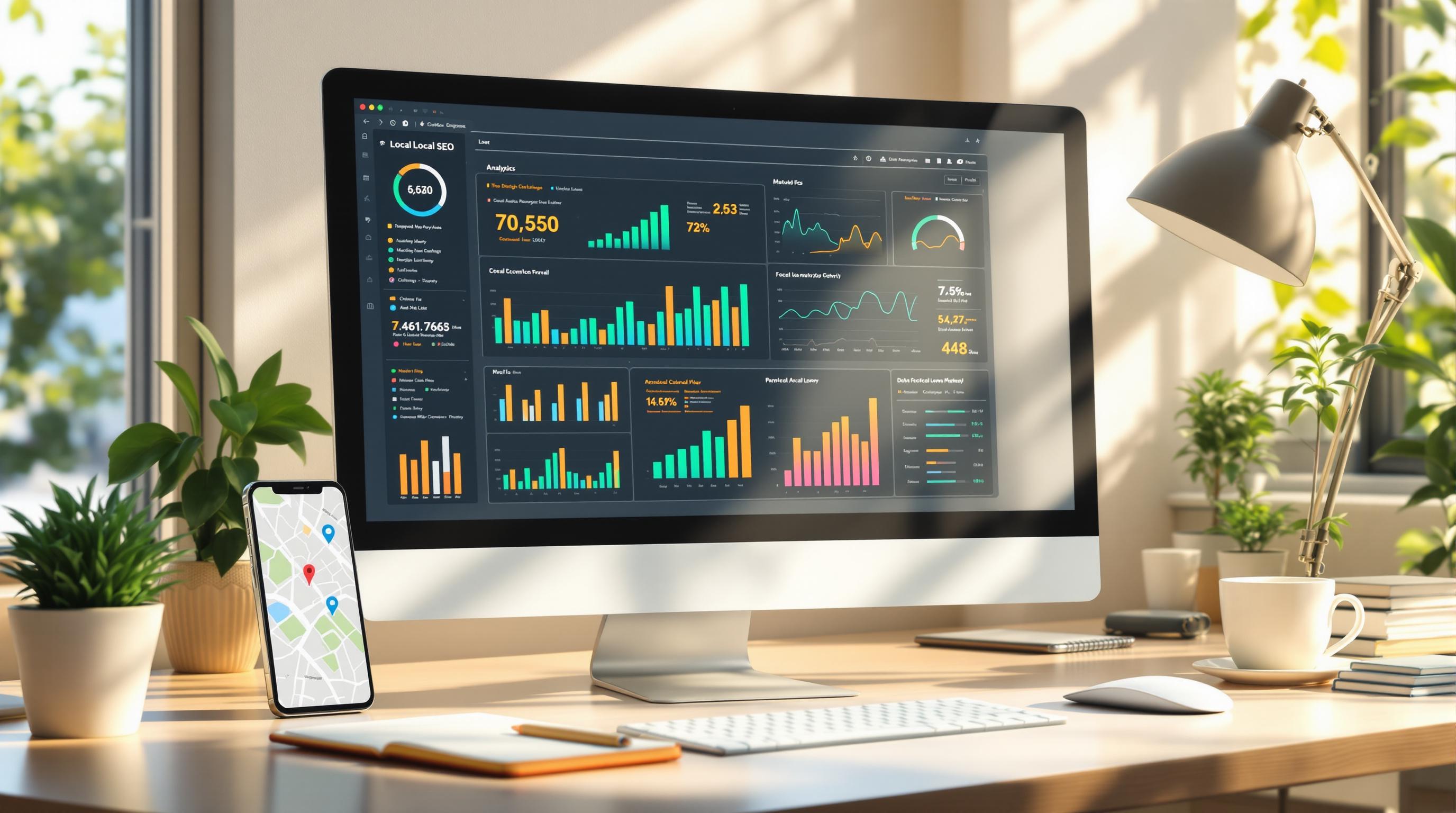Automated link monitoring helps you track and manage your website's backlinks in real time, ensuring your SEO stays strong. By using tools like Ahrefs, SEMrush, or Moz, you can evaluate link quality, detect broken or harmful links, and receive automated reports to guide your SEO strategies. Here’s what you need to know:
- Key Features: Real-time tracking, quality assessment, and automated alerts.
- SEO Benefits: Protects site authority, resolves issues quickly, and supports data-driven decisions.
- Setup Tips: Use tools that integrate with your SEO platform, customize alerts, and review reports regularly.
- AI Integration: AI tools analyze link data, predict trends, and suggest improvements to optimize your strategy.
Automating link monitoring not only saves time but also ensures your website maintains a strong, healthy backlink profile for better search engine rankings.
How to Set Up Automated Link Monitoring
Choosing the Best Tools
Tools like Ahrefs, SEMrush, and Moz are popular choices for monitoring backlinks effectively. Here's a quick look at what they offer:
| Feature | Purpose | Benefit |
|---|---|---|
| Real-time Tracking | Detects new or lost links immediately | Enables quick action |
| Quality Assessment | Analyzes link authority and relevance | Helps manage backlink profiles |
| Integration Options | Links with other SEO tools seamlessly | Simplifies workflows |
| Automated Reports | Sends regular updates on performance | Supports data-driven decisions |
Setting Up Alerts
Alerts are key to staying on top of changes in your backlink profile. You can set them up to notify you about:
- Newly acquired links
- Lost or broken links
- Changes in domain authority
Customize the frequency of these alerts based on your website’s size and activity level. This way, you’ll get updates without being overwhelmed by unnecessary notifications.
Linking Monitoring Tools to SEO Platforms
Integrating your link monitoring tool with your SEO platforms makes performance tracking easier and more efficient. Look for tools that can sync seamlessly with your existing software.
Here’s how to get started:
- Pick platforms that work well together.
- Enable API connections for secure data sharing.
- Decide which metrics to sync for a clear overview.
For instance, linking Ahrefs to your SEO platform gives you direct access to link data without switching between tools. This integration not only saves time but also ensures you’re working with consistent data.
"AI in automated link monitoring helps in analyzing large volumes of link data, identifying patterns, and predicting trends. It can enhance SEO strategies by providing more accurate and timely insights, automating routine tasks, and optimizing link building efforts."
Features and Benefits of Automated Link Monitoring
Tracking Links in Real Time
Real-time link monitoring helps maintain your site's SEO health by identifying issues like:
- Broken or inactive links
- Changes in link status
- New backlinks
- Sudden loss of existing links
This approach ensures quick action to fix problems, protecting your site's authority and search engine rankings.
Evaluating Backlink Quality
Advanced tools analyze backlink quality using key metrics:
| Metric | Measures | Why It’s Important |
|---|---|---|
| Domain Authority | Overall site strength | Indicates link impact |
| Link Relevance | Content relationship | Ensures proper alignment |
| Anchor Text | Quality of link text | Influences SEO weight |
| Link Equity | Value passed by the link | Shows SEO contribution |
These metrics highlight both valuable and harmful links, helping you maintain a strong link profile.
Generating Automated Reports
Automated reports turn link data into actionable insights, offering a clear view of your link profile's health and performance. Key advantages include:
- Regular tracking to spot trends and patterns
- Quick detection of unusual link activities
- Data to guide SEO decisions
"AI in automated link monitoring helps in analyzing large volumes of link data, identifying patterns, and predicting trends. It can enhance SEO strategies by providing more accurate and timely insights, automating routine tasks, and optimizing link building efforts." [1]
AI tools simplify this process by analyzing large datasets, identifying trends, and predicting potential link issues. This allows you to take preventive measures and refine your SEO approach.
Automate Backlink Outreach & Backlink Monitoring
sbb-itb-e98aa53
Tips for Effective Link Monitoring
Here are some practical ways to make the most of your automated link monitoring tools and features.
Review Reports Regularly
Checking your reports often helps you spot and fix SEO problems early. Pay attention to these key areas:
| Focus Area | How Often | Key Metrics |
|---|---|---|
| Link Health Check | Weekly | Broken links, 404 errors |
| Quality Assessment | Monthly | Changes in domain authority |
| Performance Trends | Quarterly | Ranking fluctuations |
Using link monitoring tools lets you act quickly when issues arise [1]. Once you notice trends in your reports, advanced filters can help you zero in on specific problem areas.
Use Advanced Filters
Advanced filters make managing your links easier by highlighting the ones that matter most.
Some useful filter criteria include:
- Domain authority levels
- Link relevance scores
- Categories of referring domains
- Patterns in link acquisition
These filters help you focus on valuable opportunities while flagging potential risks in your link profile. After narrowing your focus, AI tools can further simplify the process by offering additional insights and suggestions.
Take Advantage of AI Tools
AI tools can save time and improve your link monitoring by providing predictions and actionable advice. They can:
- Spot patterns in how links are acquired
- Flag spammy or harmful links
- Predict the effects of new backlinks
- Offer suggestions for improving your link strategy
Conclusion
Key Takeaways
Automated link monitoring plays a crucial role in modern SEO, reshaping how businesses handle their online presence. By automating tasks that were once manual, this technology allows for more efficient and effective SEO management [1]. It doesn't just track links - it offers real-time analytics and evaluates link quality, helping businesses maintain a strong link profile while conserving resources.
These tools combine real-time tracking, link quality evaluation, and AI-powered insights to improve SEO workflows and decision-making. As mentioned earlier, AI tools take this a step further by offering predictive analytics and automating repetitive tasks. However, while these tools handle the technical side, successful SEO also depends on creating excellent content and building links strategically - areas where ScaleSEO excels.
How ScaleSEO Adds Value to Link Monitoring

Beyond automated tools, working with a service like ScaleSEO ensures your link monitoring efforts are backed by top-notch content and a solid SEO strategy. ScaleSEO complements automated link monitoring by offering a range of services that focus on creating and supporting high-performing content and links. Their approach blends AI technology with the expertise of skilled U.S.-based writers to deliver SEO-optimized content that naturally attracts and retains strong backlinks.
ScaleSEO’s offerings include:
- Expert content creation to encourage organic link building
- Strategic internal and external link-building plans
- Regularly scheduled content publishing
- Optimized images and videos to boost engagement
FAQs
What is the difference between path monitoring and link monitoring in Palo Alto?

In Palo Alto systems, link monitoring and path monitoring serve different purposes in network management. While link monitoring focuses on individual connections, path monitoring looks at the entire route that data packets travel. Here's a quick comparison to clarify:
| Aspect | Link Monitoring | Path Monitoring |
|---|---|---|
| Focus | Specific connections | End-to-end route performance |
| Scope | Status of a single link | Health of the entire network path |
| Purpose | Verifies connection status | Analyzes the full route for issues |
Network administrators rely on these tools to:
- Spot Problems: Link monitoring pinpoints connection issues, while path monitoring identifies broader network disruptions.
- Improve Performance: Combining both methods allows for better network tuning.
- Ensure Stability: Regular checks help maintain smooth and consistent network operations.


